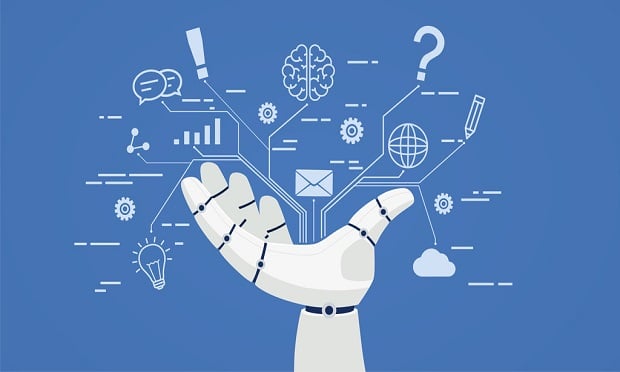 Like C-3PO from "StarWards," good AI works behind the scenes to help humanitymake better and smarter decisions. (Illustration:Shutterstock)
Like C-3PO from "StarWards," good AI works behind the scenes to help humanitymake better and smarter decisions. (Illustration:Shutterstock)
For anyone involved in an accident, the hours immediatelyfollowing are often emotional and highly stressful. A split-seconddistraction sets in motion a seemingly endless chain of events andan overwhelming list of time-intensive tasks: claims, data,testimonials, valuations, compensation, recovery andreplacement.
|Even in smaller impact incidents, emotions run high. The way inwhich insurance companies handle these "make or break" moments candetermine a consumer's long-term loyalty. The inefficient orincorrect handling of a claim can alienate a customer for alifetime.
|Thankfully, for many today, Artificial Intelligence (AI) is helping solve thisproblem with empathy.
|More than just chatbots
For those of us whose primary exposure to AI is achatbot, using this technology might sound counter-intuitive.Chatbots are designed to replace human interaction, but AI is muchmore useful than simply replacing a person with a computer. It canenable us to do so much better.
|We only need to look to one of the most famousexamples ever imagined for inspiration: C-3PO from "Star Wars,"also know as human cyborg relations.
|It's hard to not think of C-3PO as a person: "He" isempathetic and cares deeply about those around him, always payingattention and assessing risk factors or danger. He uses years ofexperience to sense prodromes and helps others make well-informeddecisions based on his assessment and capabilities.
|He's not the hero, though, at least not in the publiceye. What he does is enable everyone else to be the hero whilefunctioning in the background. This is what good AI can do. Workbehind the scenes to help humanity make better and smarterdecisions.
|Good AI can help us offer intuitive and proactivecustomer care — a very human anticipation of what's needed inthe moment. This is why we're seeing customer-focused insurancecompanies increasingly turn to AI to help human employees providethe best support during the worst incidents; becoming the driver'strusted partner in the aftermath of a motor accident by offeringthe right solution when it is needed, the fastest claimsprocessing, as well as an intuitive and sympathetic earthroughout.
|A boost to customer care
AI is able to analyze a wealth of data to informinsurer's empathetic responses. And while it might seemcounter-intuitive to think of it as a tool to guide intuitivecustomer support), machine learning has the power to disrupt theentire insurance industry. For one, it affords companies thepotential to simplify the entire crash-to-claim process foreveryone involved.
|Traditionally, the burden of reporting an incident ina timely and accurate manner has fallen entirely on the, verypossibly bruised, shoulders of the vehicle's owner. Even whilerecovering or in shock the individual has to work out who to callto tow the vehicle, how to best record the incident for the insurerand what additional information they might need — all the whilehoping that everything they and third-party witnesses report isaccurate. Should any detail prove incorrect, the perceived veracityof their claim could be impacted, significantly delaying theinvestigation and adjudication.
|It's a lot to ask, and it doesn't have to be that way.AI is a more accurate and non-emotional witness. More specifically,impact detection technology is able to record even smallcollisions, immediately issuing an automated alert to the insurerto inform them that there has been an incident. Impact detectiontechnology could even be a lifesaving intervention. Depending onthe severity of the accident, an automated report could ensure anambulance or recovery vehicle is on its way before the individualsinvolved have regained consciousness.
|Moreover, contextual analytics and telematics data canreconstruct the crash or collision, identifying responsibilityand analyzing damages to inform quick and accurate costassessments. AI-powered crash reconstruction shows all elements ofthe collision which can then be quickly and easily cross-referencedand corroborated against eye-witness testimonials.
|By doing so, the burden of reporting and claimsmanagement is passed to the insurer, enabling its support team toreach out to the customer and offer real-time assistance. Forcustomers this level of intuitive support can be a lifeline from amental health perspective. The data offers insurers the best ofboth worlds — they're able to offer high-touch customer service tofacilitate the claims process more quickly and easily identifyfraudulent or spurious claims, preventing claims leakage andfinancial losses.
|Invaluable from a customer retention perspective, AItruly has the potential to transform the perception of insurersfrom a necessary monthly payment to a trusted and valued life-longpartner.
|C-3PO can do more than just battle the dark side, hecan inspire positive change in a stalwart industry.
|Ryan McMahon is vice president of Cambridge MobileTelematics. For more information or to contact this author,send email to [email protected].
|These opinions are the author's own.
|See also:
Want to continue reading?
Become a Free PropertyCasualty360 Digital Reader
Your access to unlimited PropertyCasualty360 content isn’t changing.
Once you are an ALM digital member, you’ll receive:
- All PropertyCasualty360.com news coverage, best practices, and in-depth analysis.
- Educational webcasts, resources from industry leaders, and informative newsletters.
- Other award-winning websites including BenefitsPRO.com and ThinkAdvisor.com.
Already have an account? Sign In


